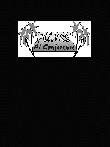Published:
May 1999
Proceedings:
Proceedings of the Twelfth International Florida Artificial Intelligence Research Society Conference (FLAIRS 1999)
Volume
Issue:
Proceedings of the Twelfth International Florida Artificial Intelligence Research Society Conference (FLAIRS 1999)
Track:
All Papers
Downloads:
Abstract:
A visual system that interacts with the real world must be able to adapt to unexpected situations and to flexibly discover relevant visual cues. We present a method that allows incremental learning of discriminative features. The feature space includes juxtapositions of k oriented local pieces of edge (edgels) and is parameterized by k and the relative angles and distances between the edgels. Specific features are learned by sampling candidate features from this space, increasing k as needed, and retaining discriminative features. For recognition of an unknown scene or object, features are queried one by one. As a result of each query, zero or more candidate object classes are ruled out that do not exhibit this feature to a sufficient degree. We discuss issues of computational complexity, and present experimental results on two databases of geometric objects.

FLAIRS
Proceedings of the Twelfth International Florida Artificial Intelligence Research Society Conference (FLAIRS 1999)
ISBN 978-1-57735-080-4
Published by The AAAI Press, Menlo Park, California.
